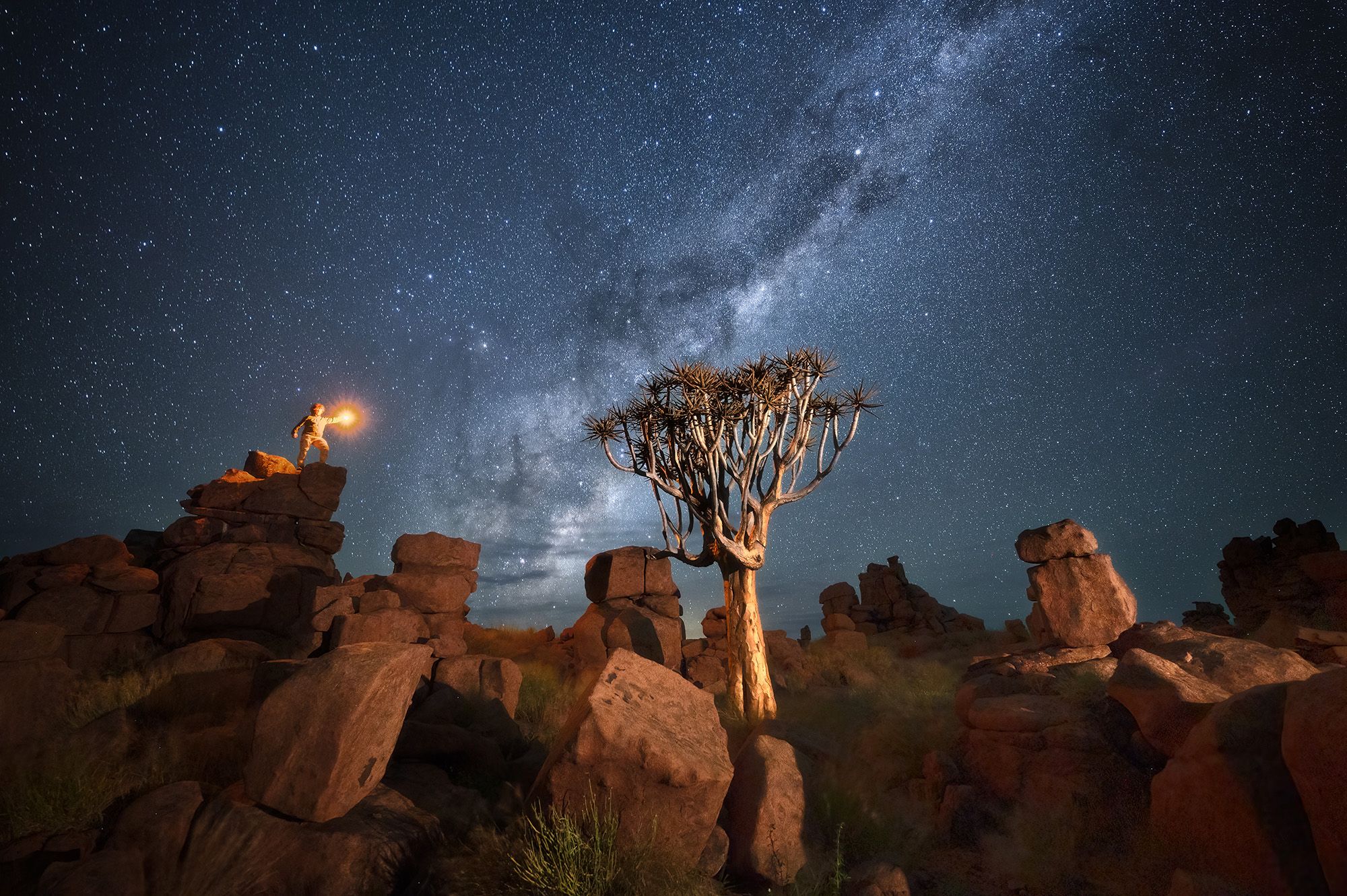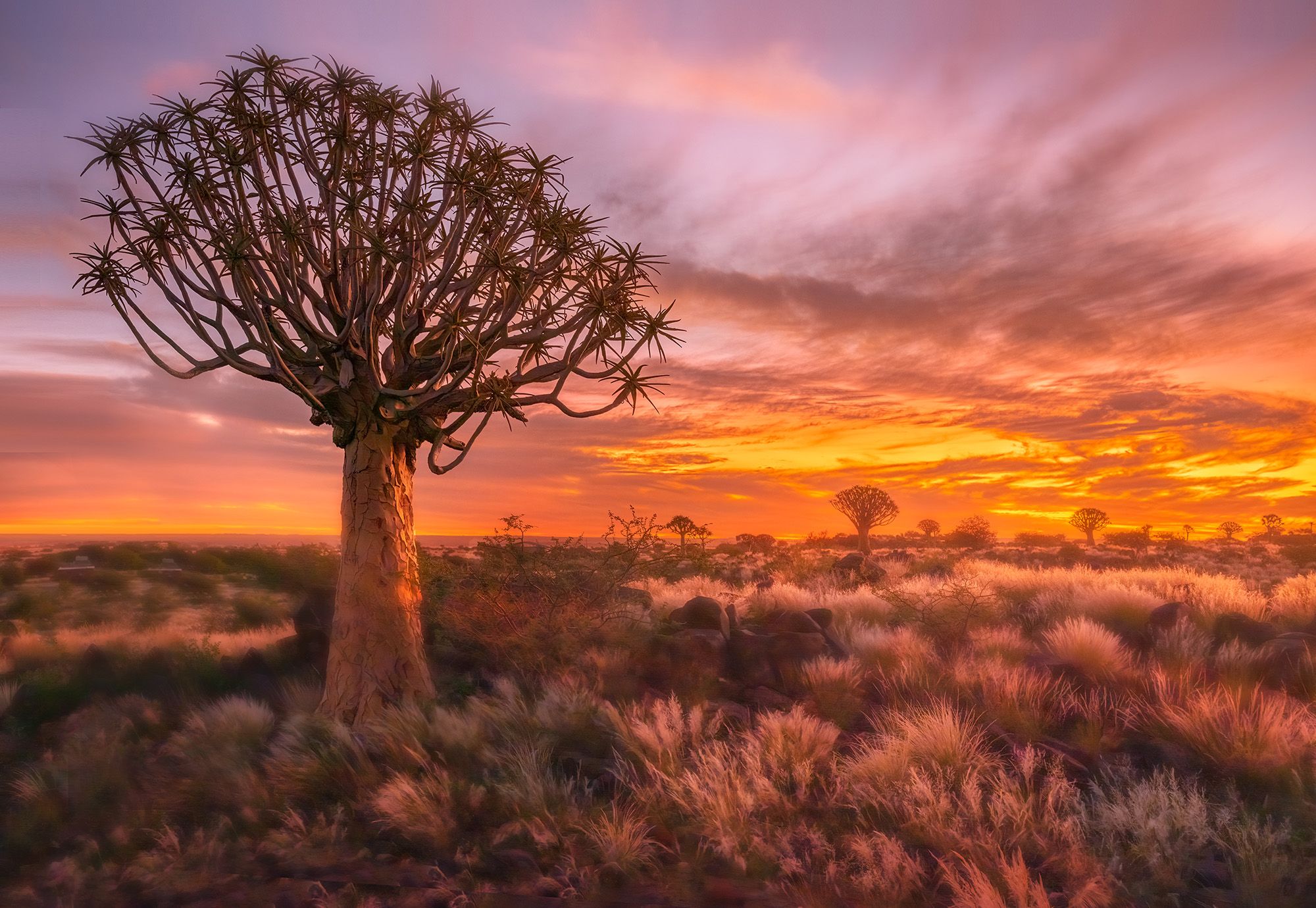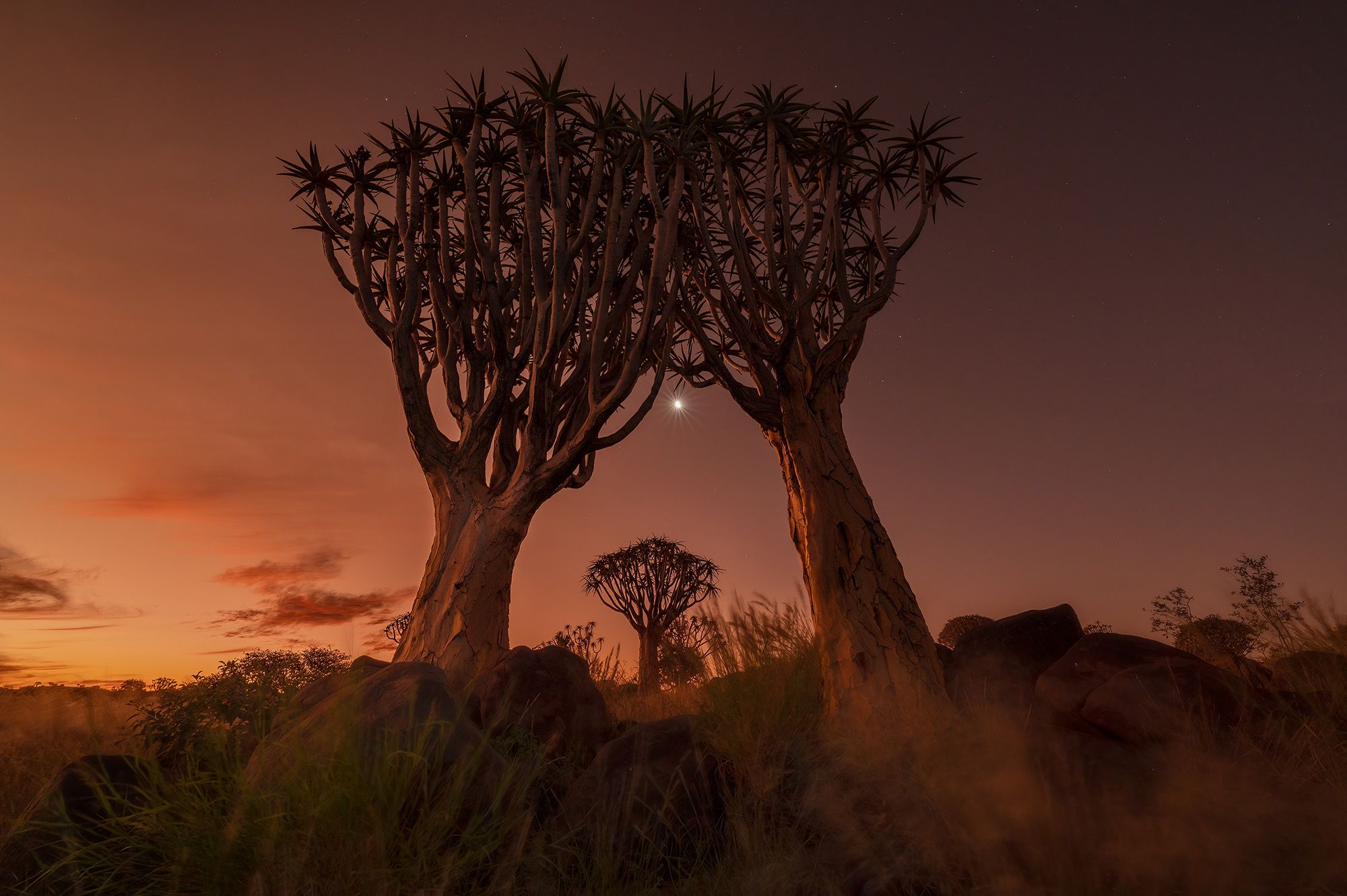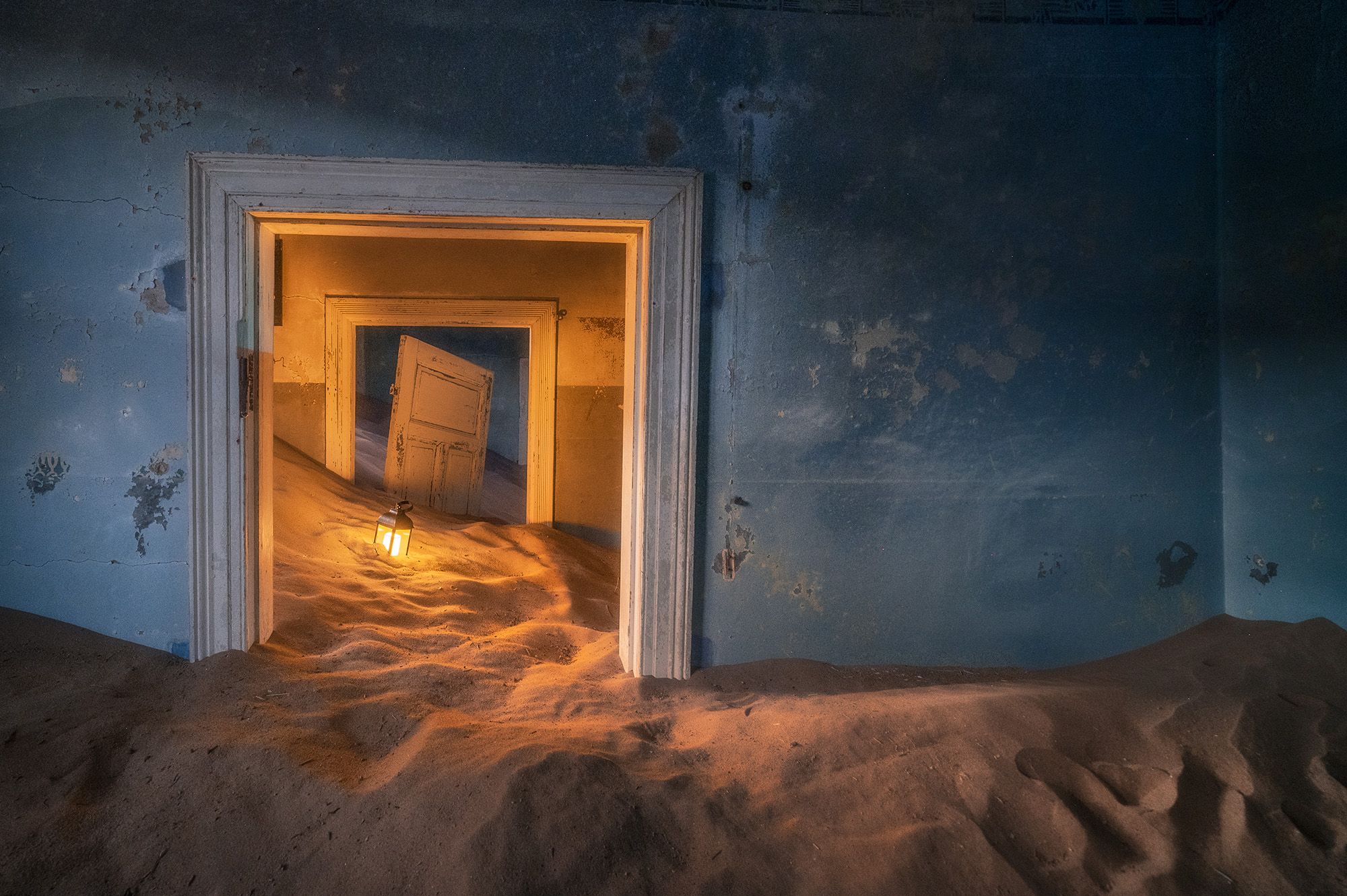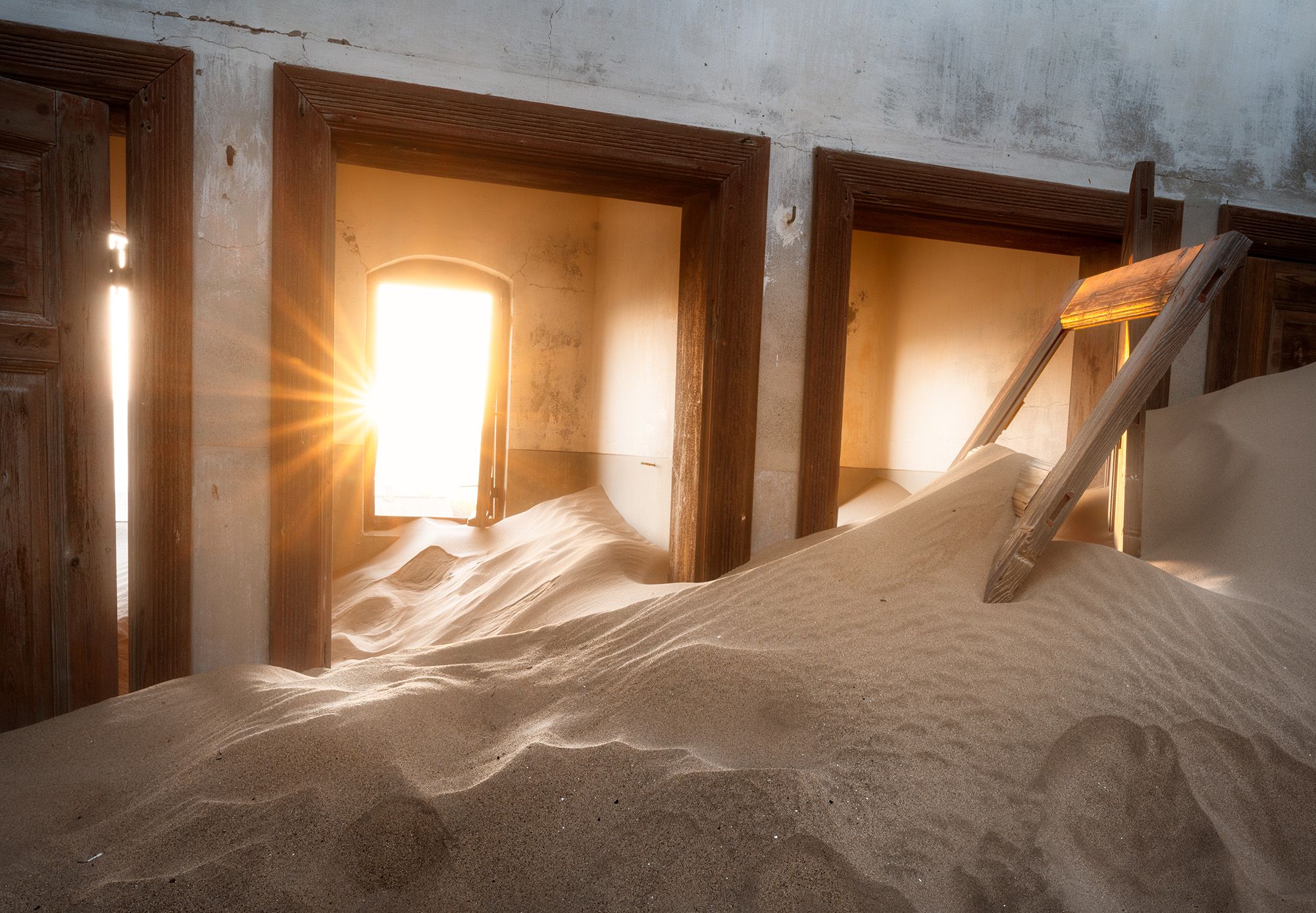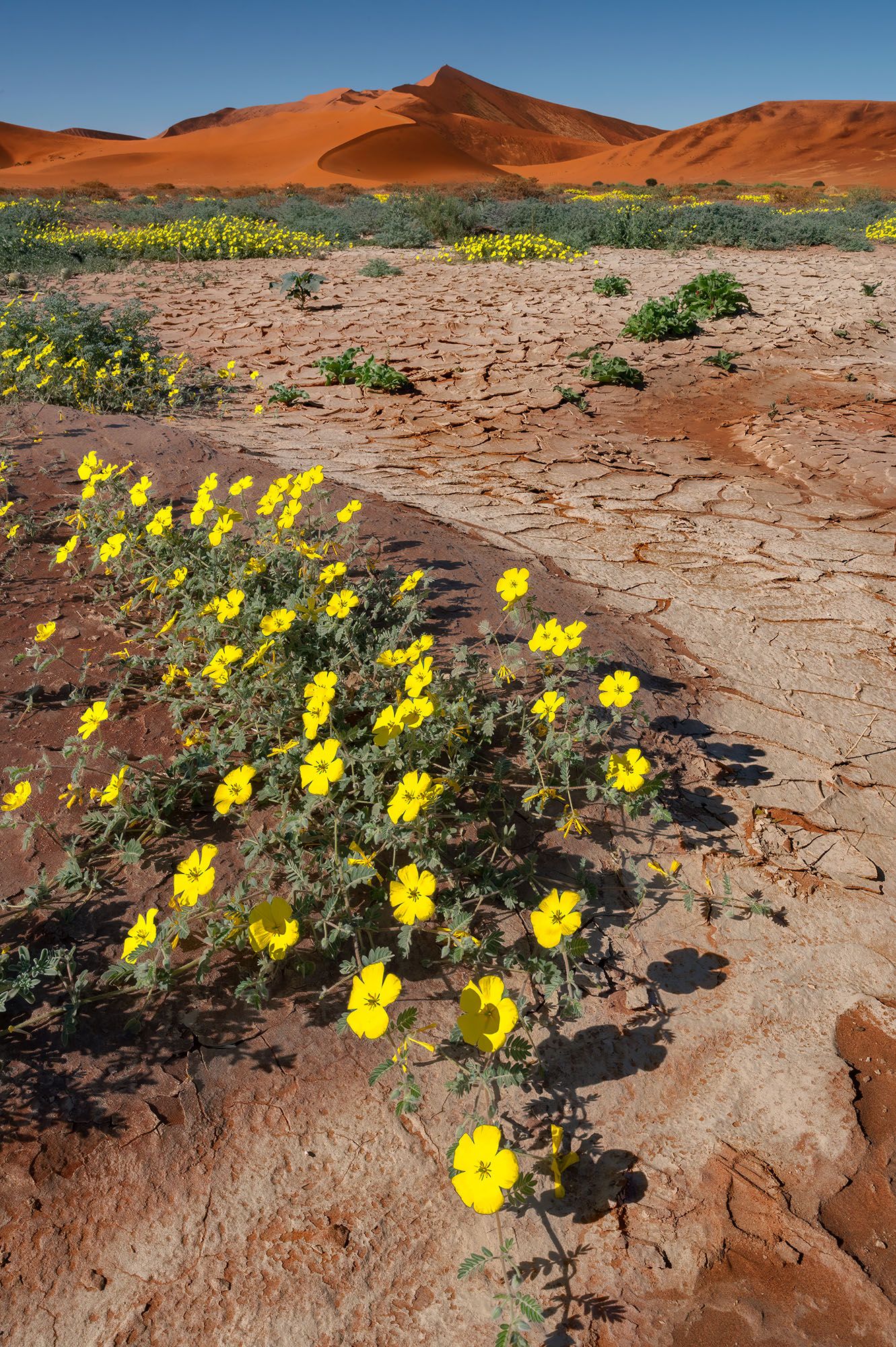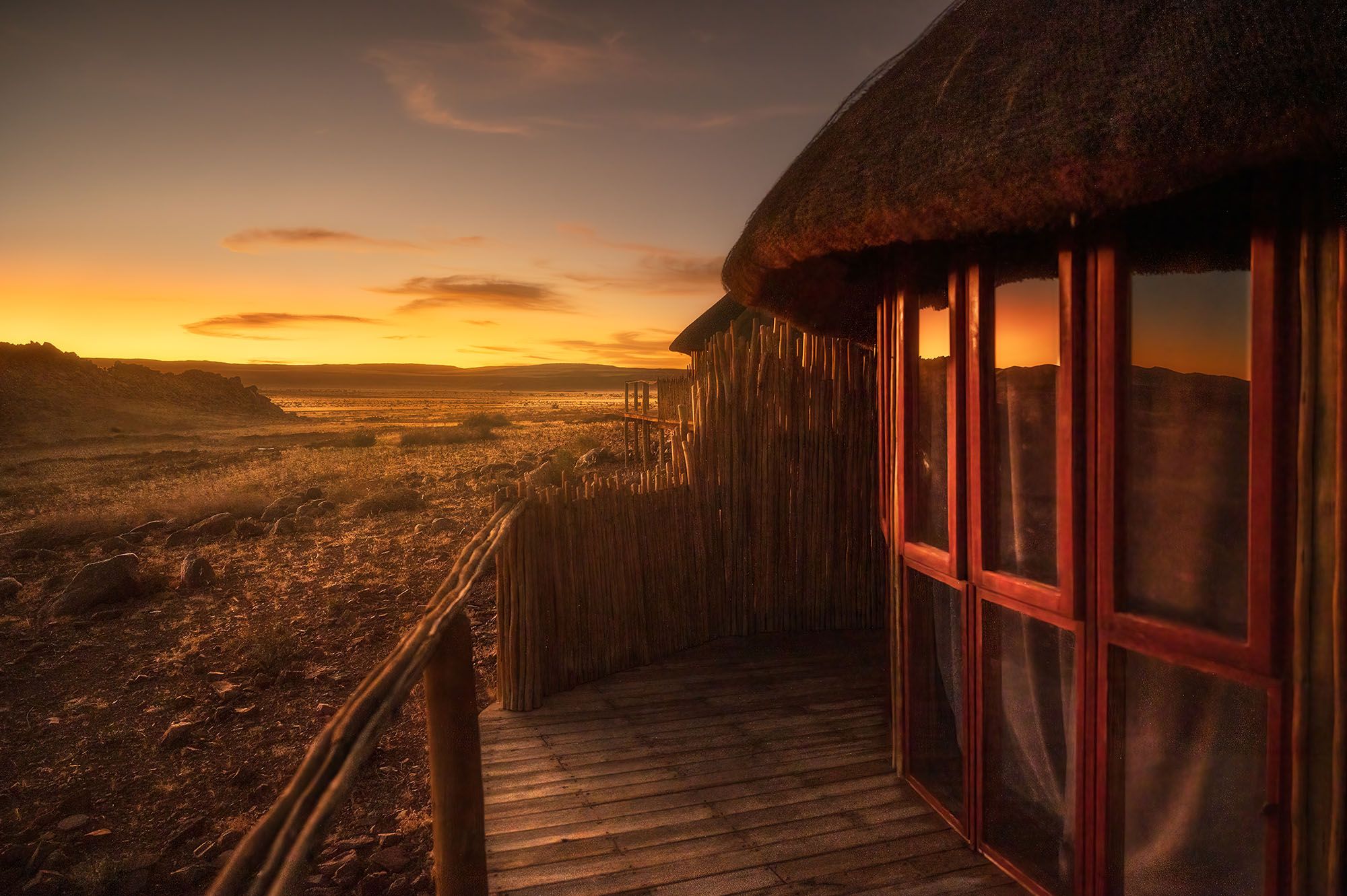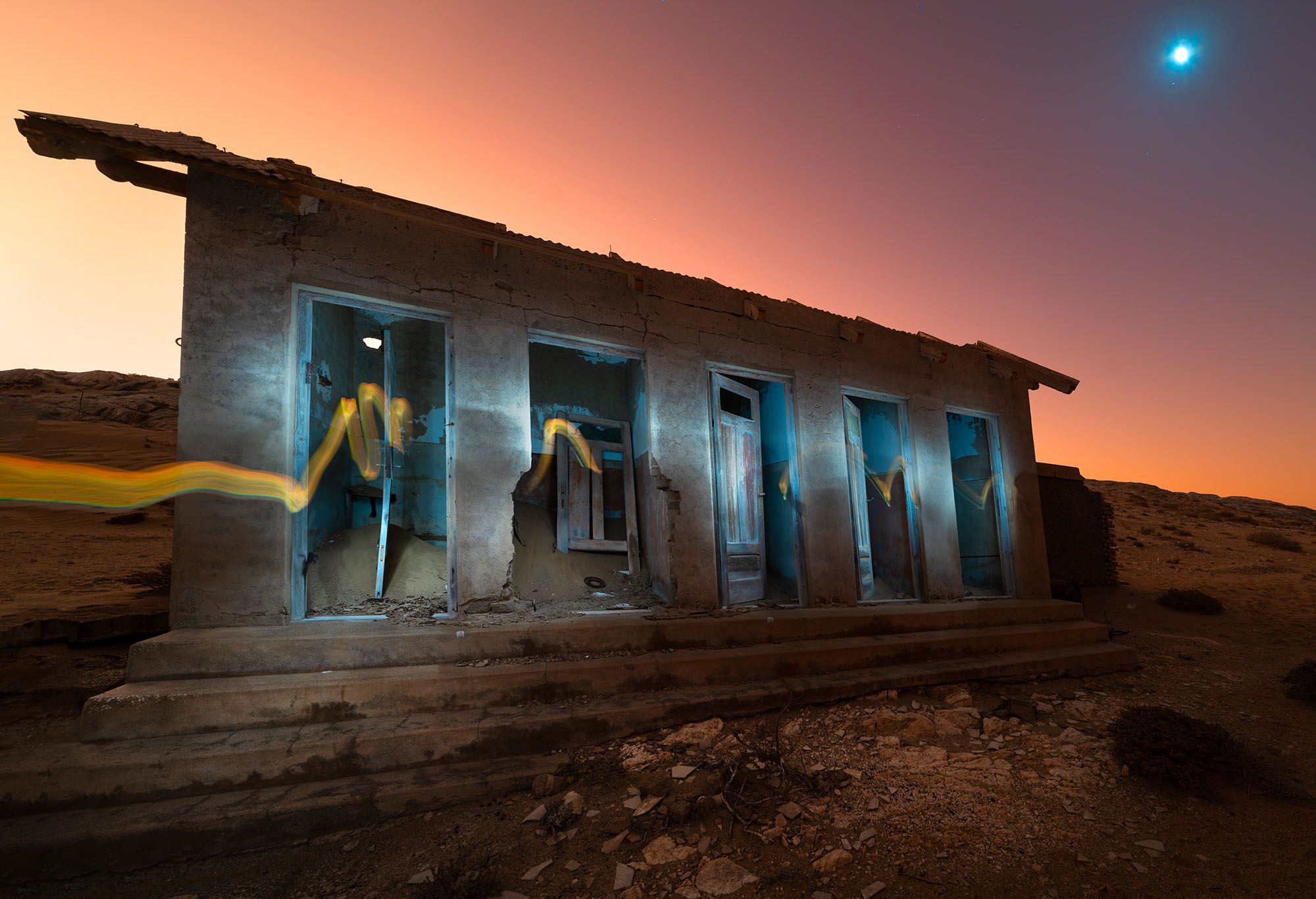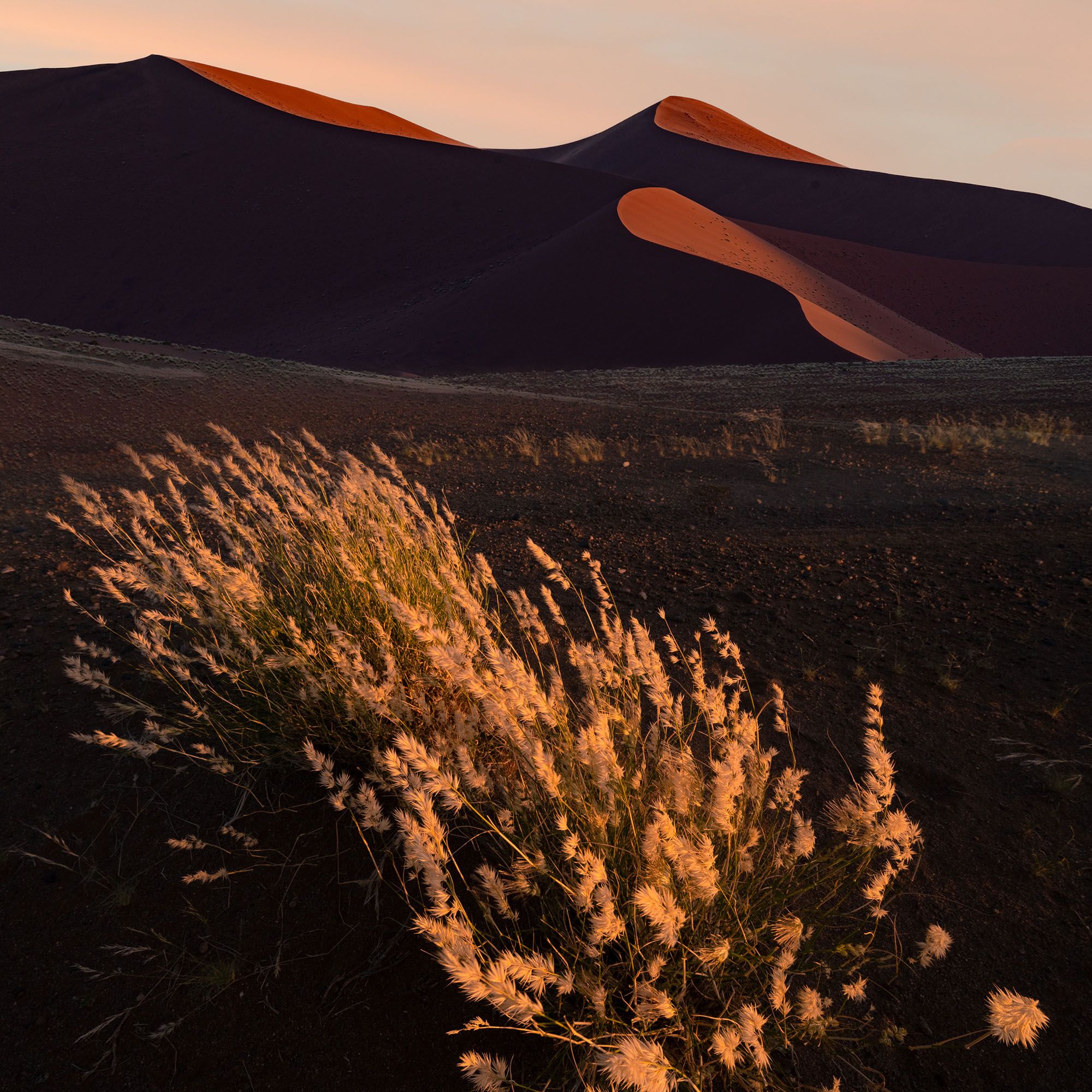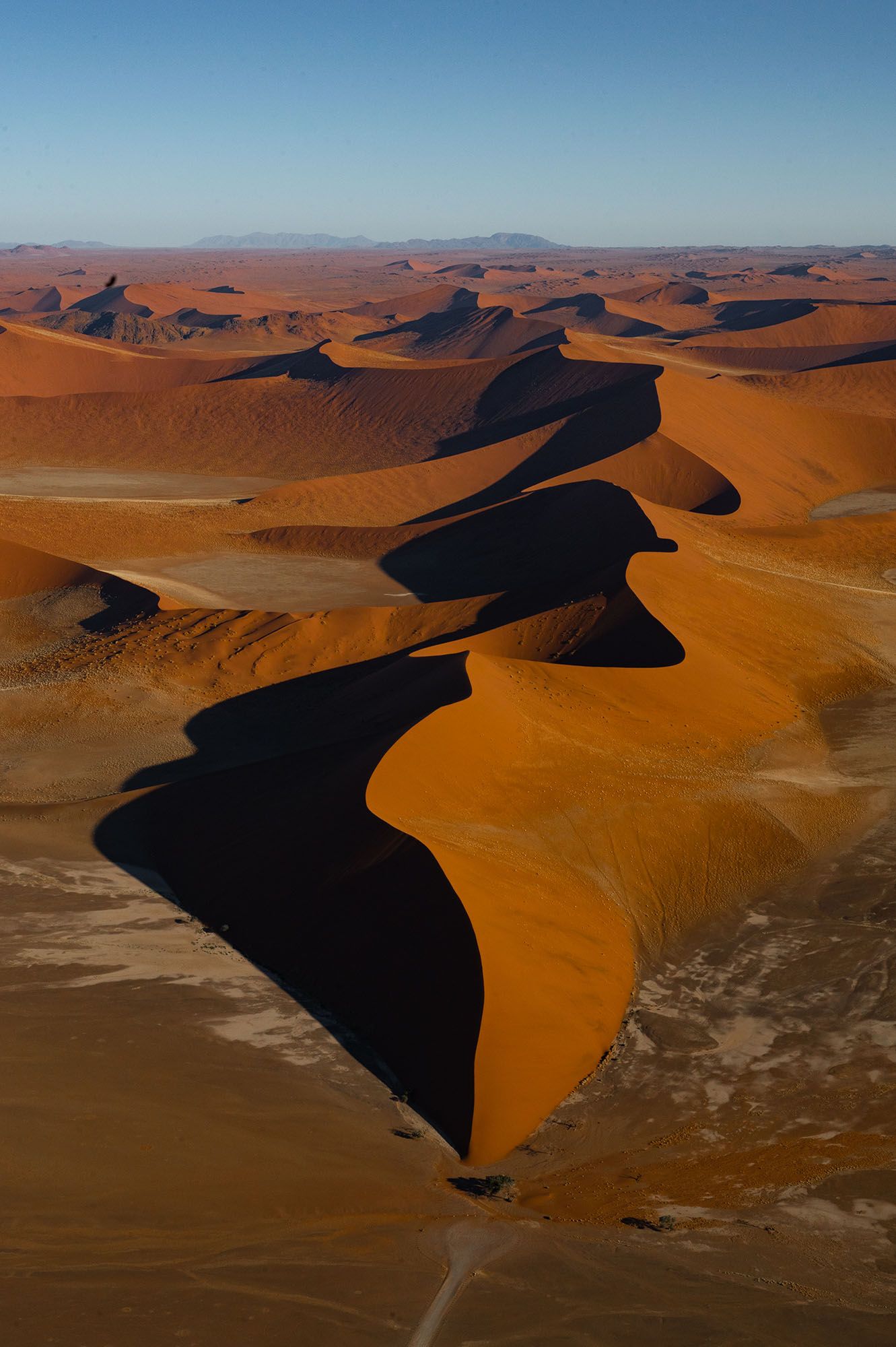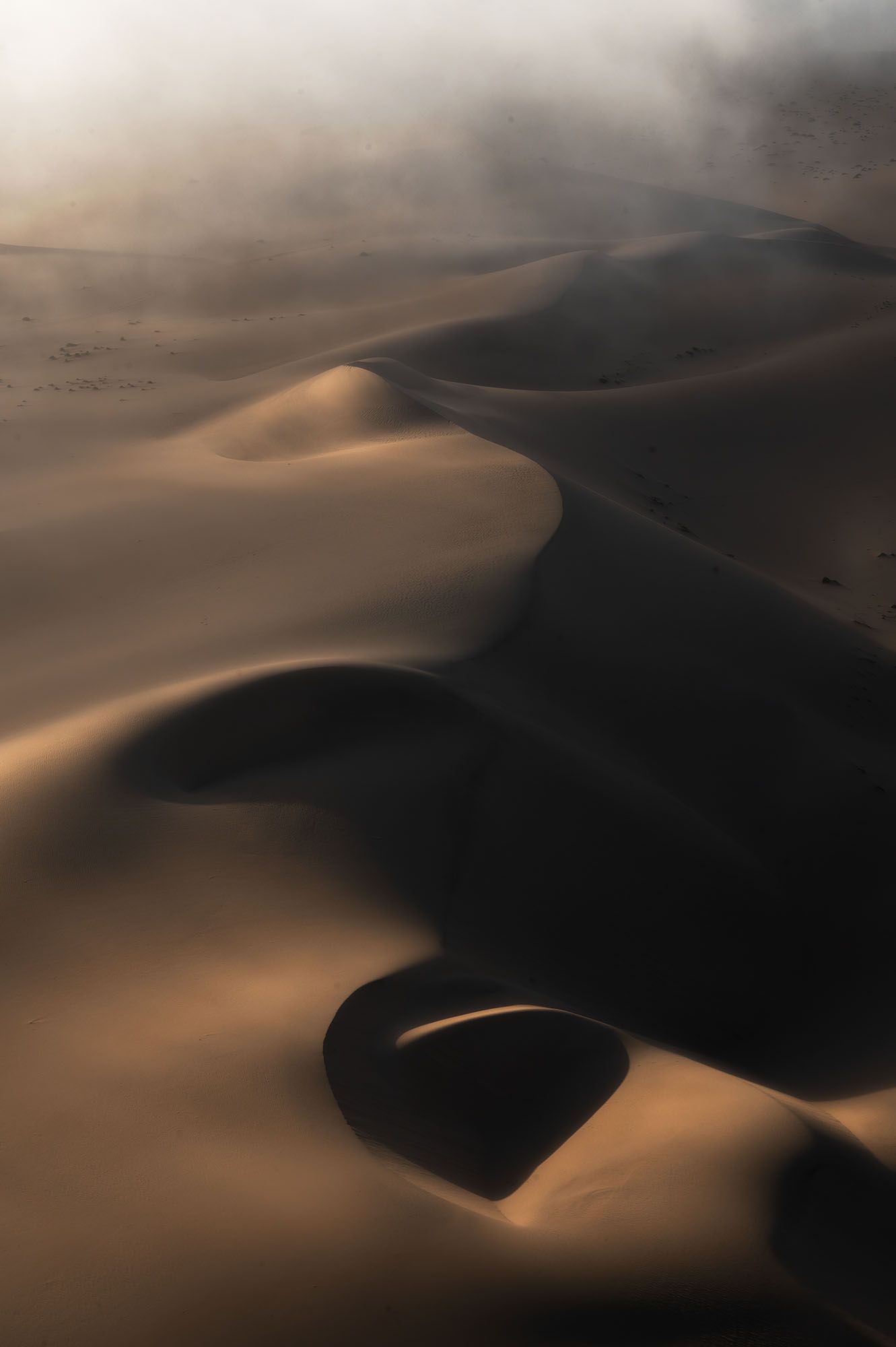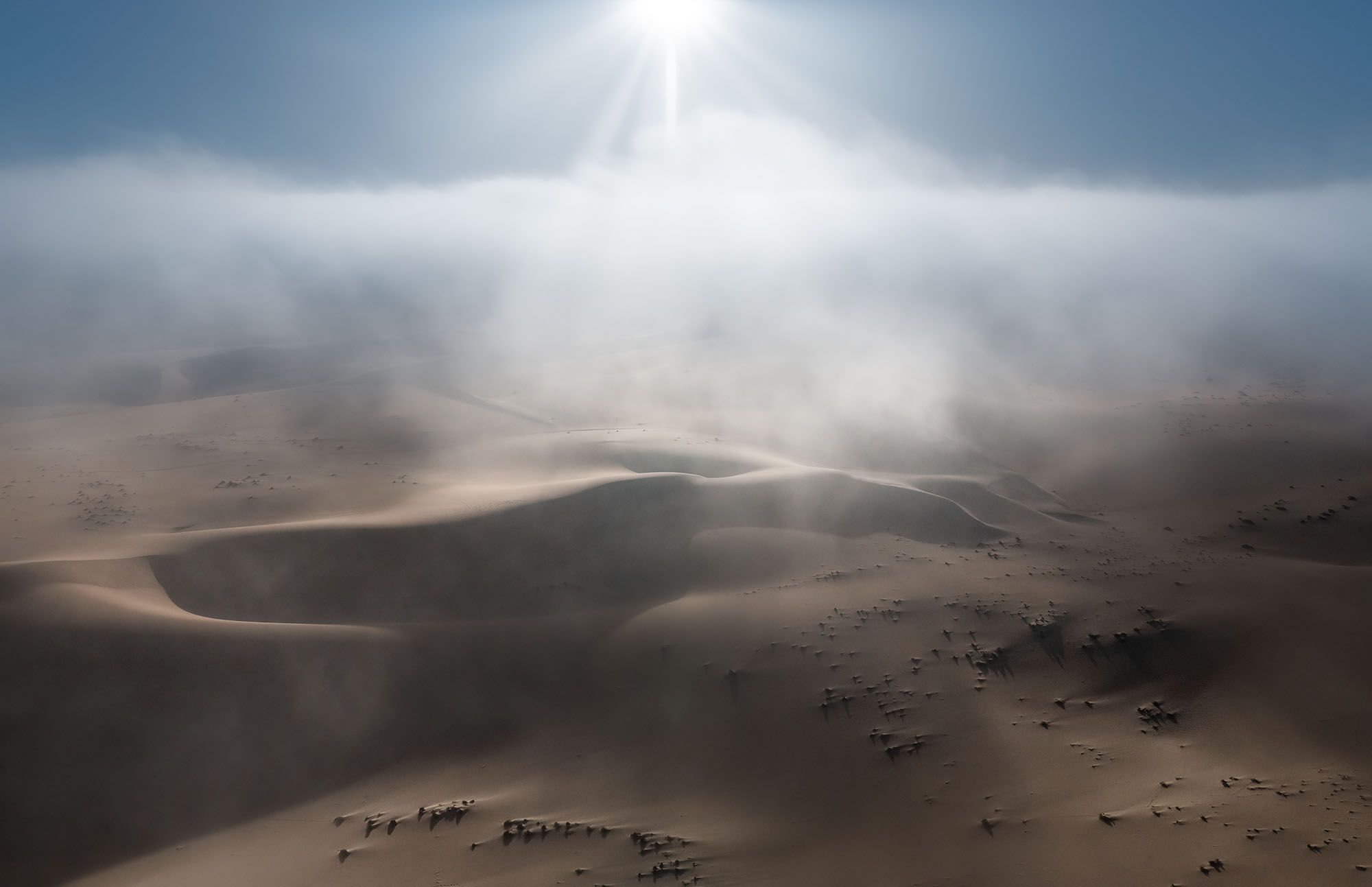The Namibia Collection
©Jennifer Blake Fraser, LLC
The Namibia Collection
©Jennifer Blake Fraser, LLC
About the Namibia Photo Expedition
This was a 12 day expedition
In April of 2022 I joined a photo expedition to Namibia, Africa. Our guides were Daniel Kordan and Iurie Belegurshi who are both amazing, world renown photographers. I had traveled with Daniel and Iurie on several other expeditions and it's always been an amazing experience with each trip resulting in significant growth in my skill level. Namibia was breathtakingly beautiful in morning and evening light and oppresively hot in late afternoon. However, that morning and evening light was unlike any I've ever seen. Gorgeous.
Windhoek
This was our arrival and departure location.
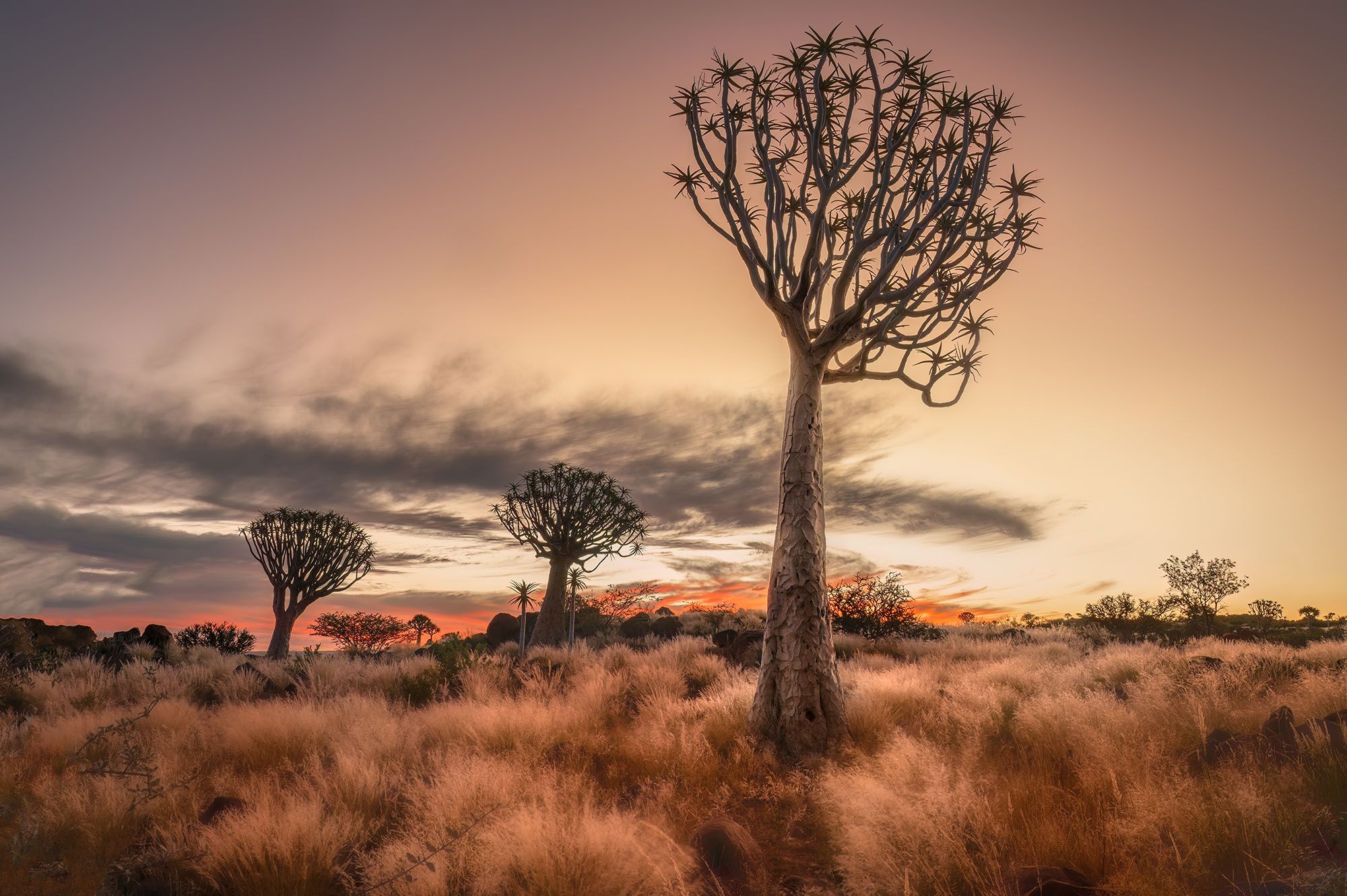
Keetmanshoop
This was the location of the amazing Quiver Tree Forest.
From Wikipedia:
The San people traditionally used its branches to make quivers. The forest is spontaneous; the tallest quiver trees are two to three centuries old. The forest was declared a national monument of Namibia in 1995.
The quiver tree is also known for looking upside down because the "leaves" look somewhat similar to roots. This tree has a long history of beliefs that it will bring good luck to anybody that worships a tree and nurtures it. Since diamonds are very rich in Namibia, people say that if one of these trees is dug up, one will get diamonds in their lifetime, but since these trees are blessed nobody wants to dig them up.
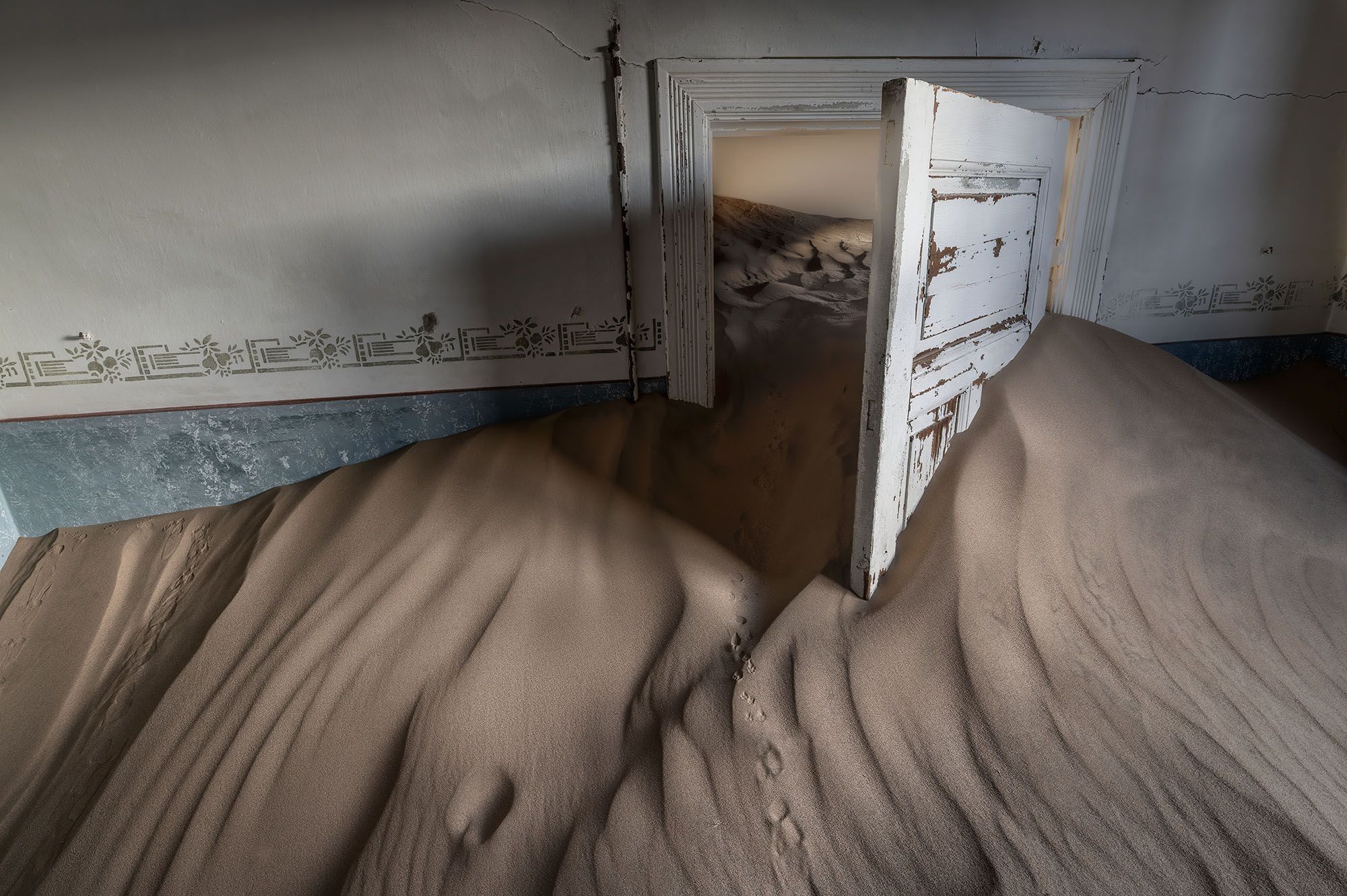
Kolmanskop
This abandoned town in the Namib desert was once a thriving diamond mining area. Once the diamonds began drying up and a much richer reserve was found nearby, the resident literally left the town leaving even their possessions behind.
From Wikipedia:
The town was ultimately abandoned in 1956. The geological forces of the desert mean that tourists now walk through houses knee-deep in sand. Kolmanskop is popular with photographers for its settings of the desert sands' reclaiming this once-thriving town, and the arid climate preserving the traditional Edwardian architecture in the area.
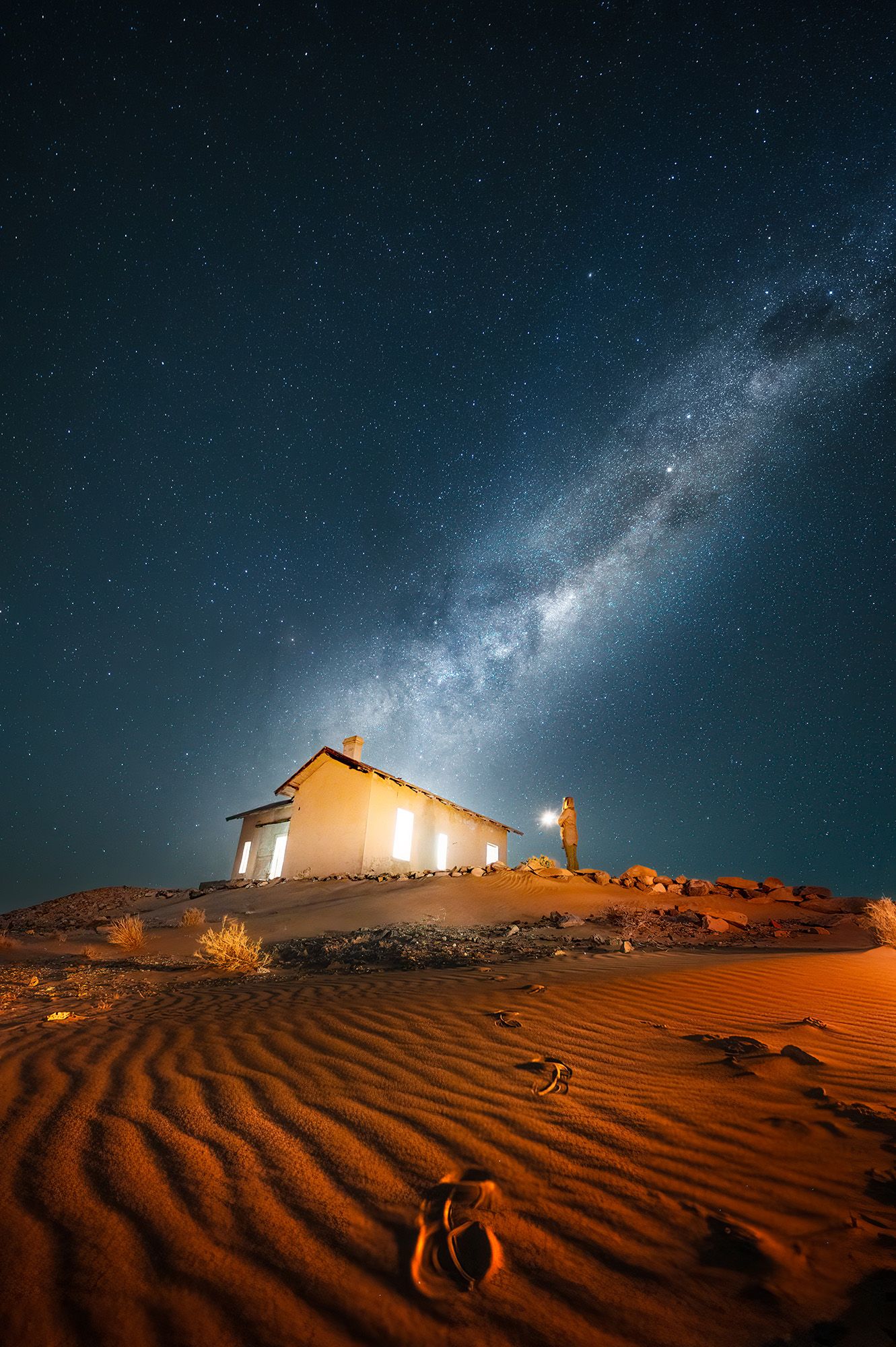
Kolmanskop
Just outside the ghost town is an abandoned train station in the middle of the Namib desert. This location offers amazing opportunity for Milky Way shots.
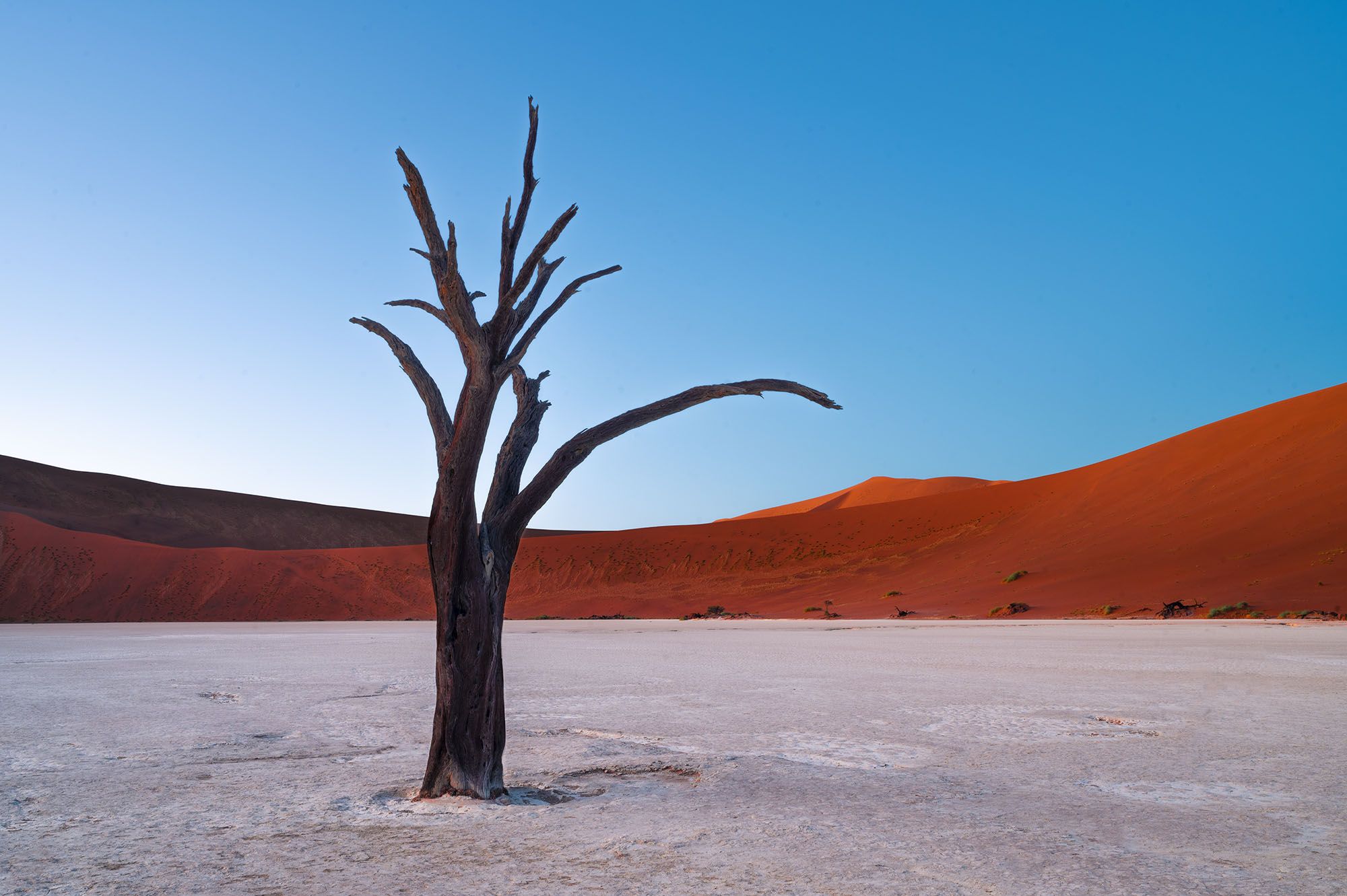
Deadvlei
This iconic area in Namibia offers a truly unique experience. Dead camel thorn tress pepper the white clay flat that is surrounded on all sides by brilliant red dunes. The result is striking.
From Wikipedia:
The clay pan was formed after rainfall, when the Tsauchab river flooded, creating temporary shallow pools where the abundance of water allowed camel thorn trees to grow. When the climate changed, drought hit the area, and sand dunes encroached on the pan, which blocked the river from the area.
The trees died, as there no longer was enough water to survive. The remaining skeletons of the trees, which are believed to have died 600–700 years ago (ca. 1340-1430), are now black because the intense sun has scorched them.[2][3] Though not petrified, the wood does not decompose because it is so dry.[4]

Spitzkoppe
We had opportunity to stay in Spitzkoppe. With beautiful rock formations all around. We also managed to snag some amazing Milky Way shots.
From Wikipedia:
The Spitzkoppe is a group of bald granite peaks or inselbergs located between Usakos and Swakopmundin the Namib desert of Namibia. The granite is more than 120 million years old and the highest outcrop rises about 1,728 metres (5,669 ft) above sea level.
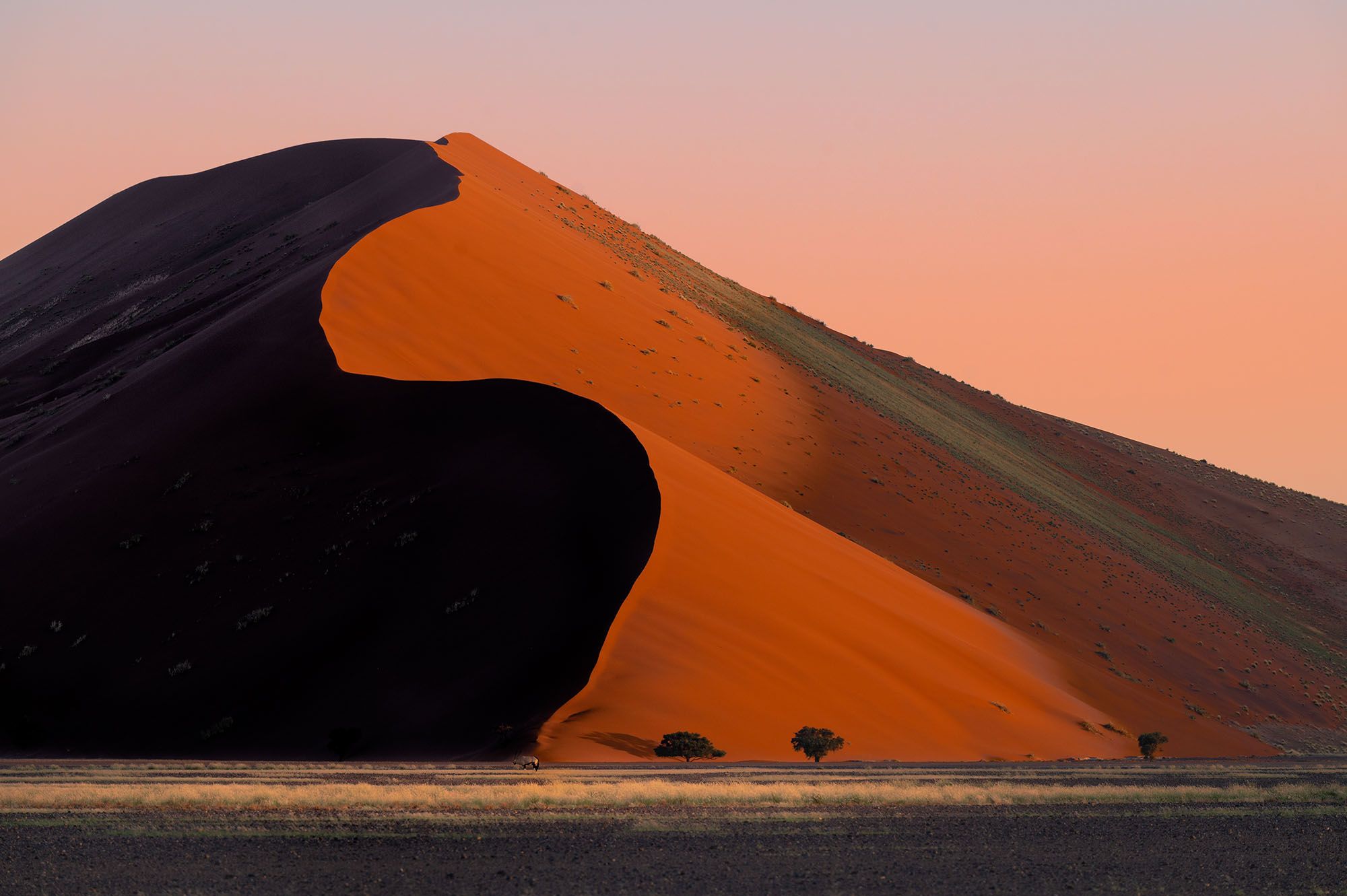
Sossusvlei National Park
One of the highlights of Namibia is Sossusvlei. This area has amazing high dunes that are a rich red color.
From Wikipedia:
This area is characterized by high sand dunes of vivid pink-to-orange color, an indication of a high concentration of iron in the sand and consequent oxidation processes. The oldest dunes are those of a more intense reddish color. These dunes are among the highest in the world; many of them are above 200 metres, the highest being the one nicknamed Big Daddy, about 325 metres high

Walvis Bay
This gorgeous area is where the Atlantic and the Namib desert meet. We both flew over this area in a helicopter and drove along the coast by 4x4. It is an amazing sight to behold the sea of water meeting the sea of dunes.
...behind the scenes
Some snapshots while on the expedition. Sometimes it's fun to see the behind the scenes images.
-
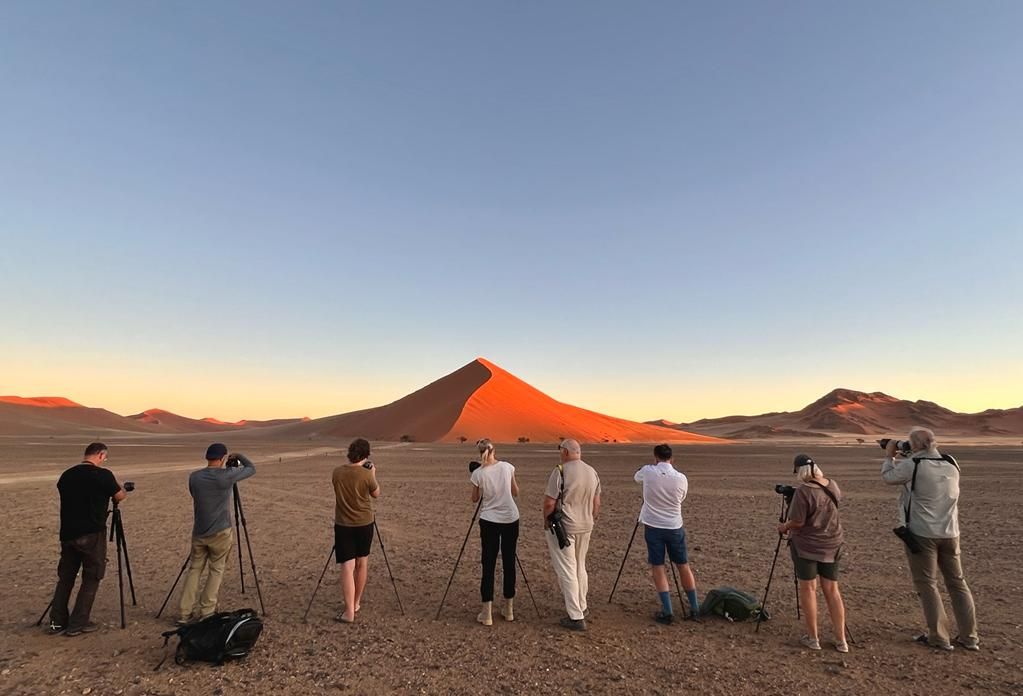
The group is shooting at Sossusvlei. There is a gazel at the base of the dune. She allowed us to get fairly close but we had to slowly move in.
-

Shooting the Milky Way at Giant's Playground.
-

Our accomodations were amazing!
-

Shooting the dunes at Walvis Bay.
-
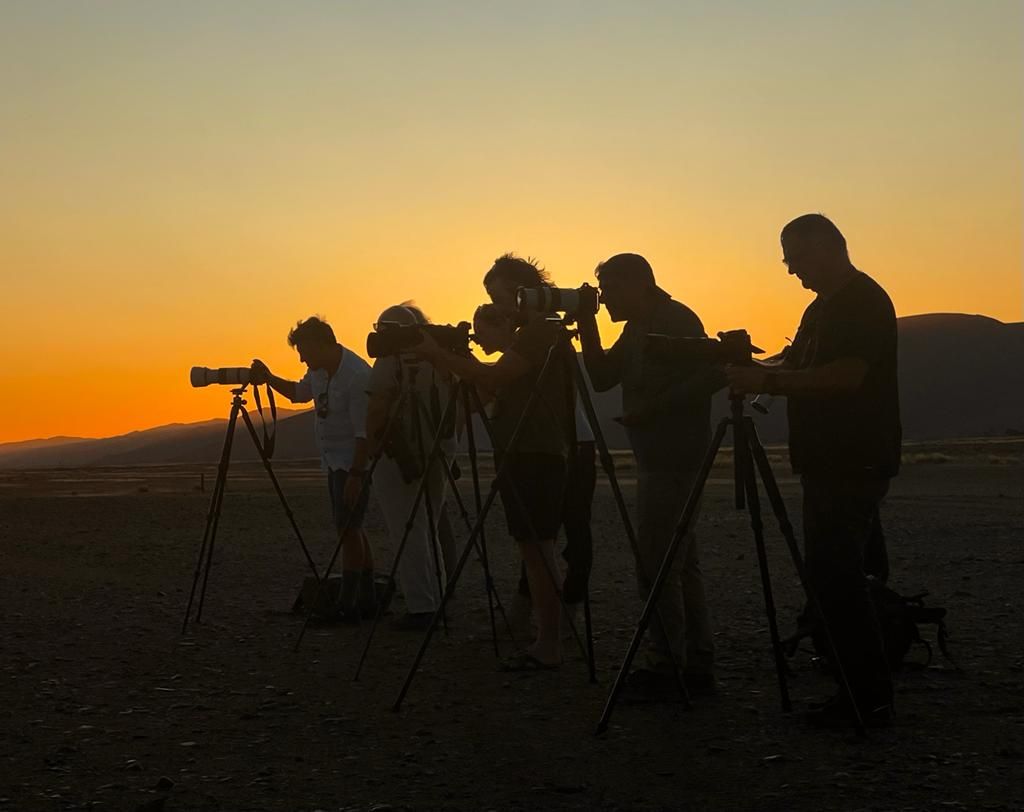
I call this the "Photographer Stack". There's frequently one spot that is "The Spot" so you wind up with a stack of photographers in that one location.
-
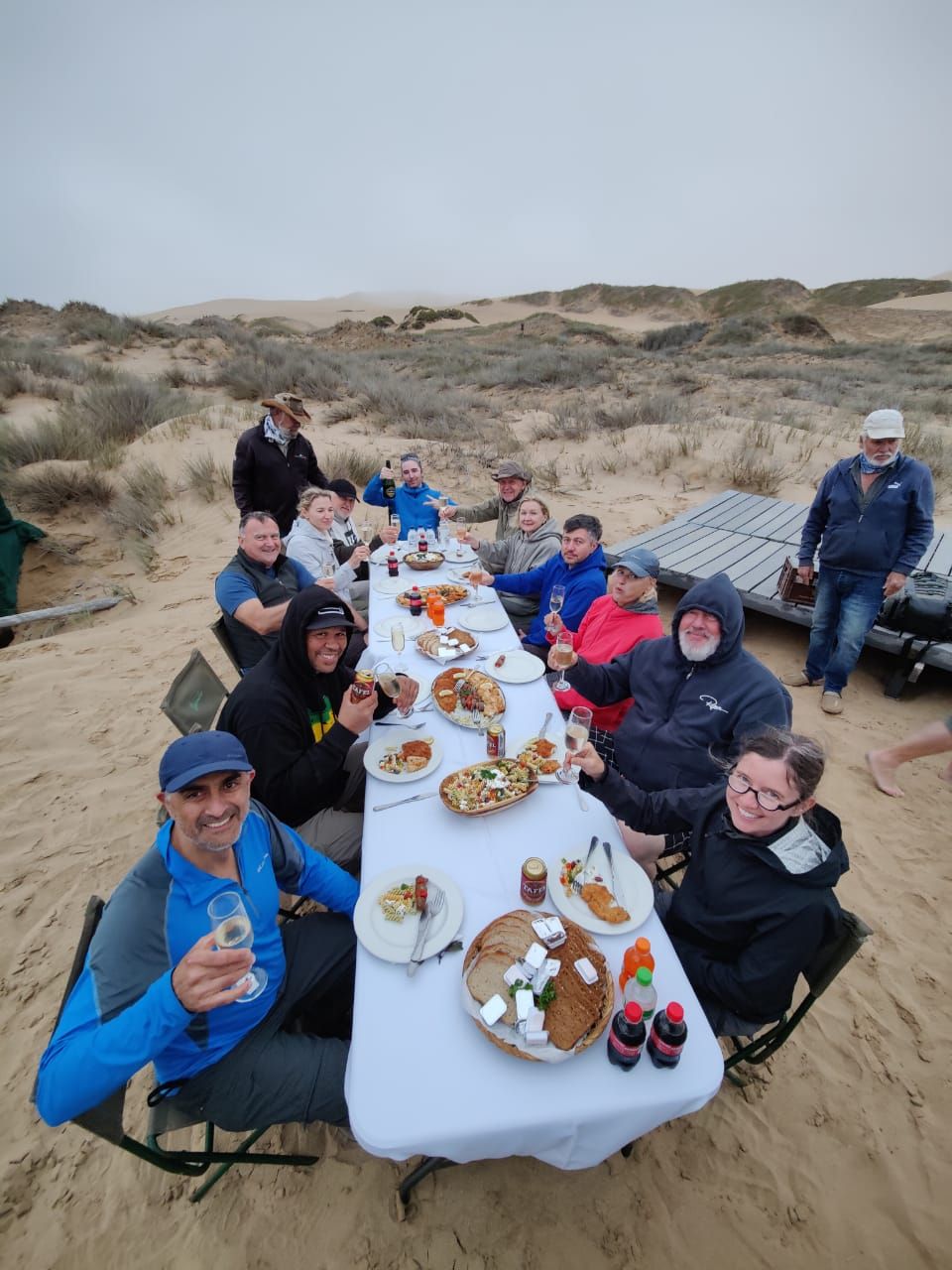
We had several amazing meals out in "the bush" or on the dunes in this case.
-

This was the hike from the parking area to the trees of Deadvlei. And it was as hot as it looks in the late day.
-

Oh my gosh these things were absolutely everywhere and they were as huge as they look. The don't bother people but they do eat each other. So gross. They got into everything. They were even in our rooms. I found one in my luggage. We had mosquito nets and that seemed to keep them out of my bed at least.
-

Daniel instructing how to set up a star trail shot. The star trail over a camel thorn tree was one of the main shots I wanted to get and mine failed. I only had one chance to get it. I shed a tear over that one.
-

One of the highlights was getting to take a helicopter ride over the Namib from Sossusvlei to the coast.
-

Photographers fit into all kinds of tiny cracks.
-
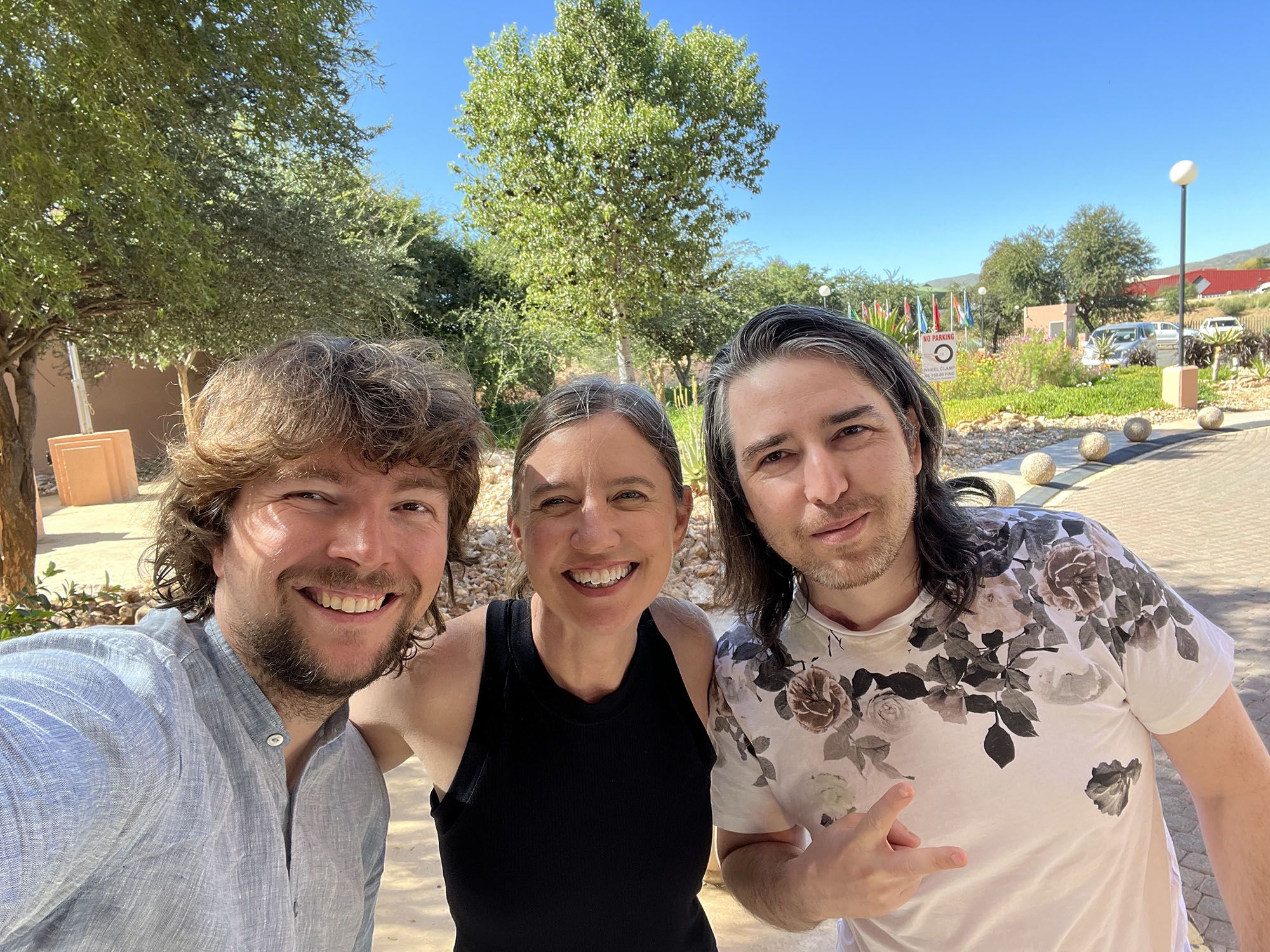
My traditional selfie with Iurie and Daniel.
